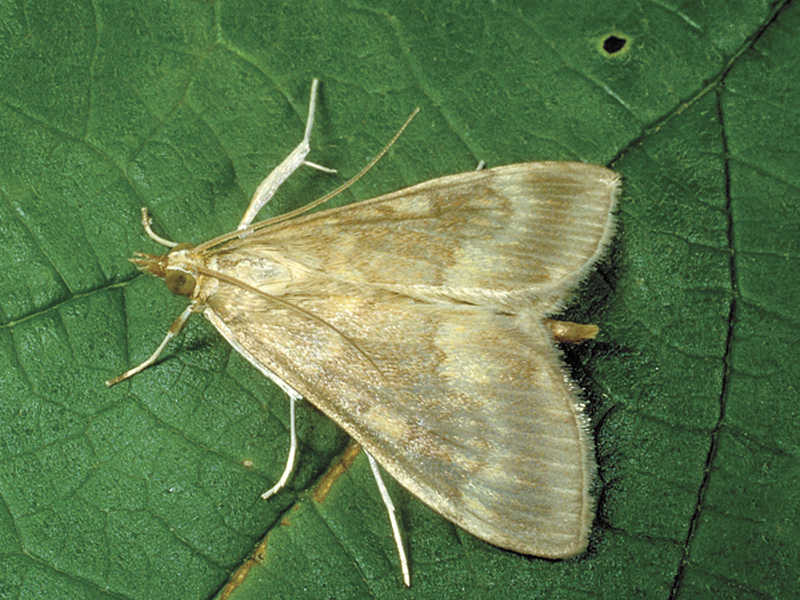
UCR: Male moths use ratio-based attraction through pheromones
Thanks to some of UCR’s own alumni and faculty, several questions regarding the mating patterns of moths have been answered. Distinguished Professor of Entomology and A.M. Boyce Chair Ring Cardé and former graduate student Teun Dekker both participated in international research that focused on how male moths use pheromones to find mates.
Female moths have various blends of pheromones that differ across species. Only a male moth of the same species will be attracted to its respective mate’s pheromone ratio. However, there are many cases of hybrids.
This is the problem that Cardé, Dekker and the rest of the team addressed when their study of the European corn borer flying through a pheromone plume showed “that as the male moth flies upwind along the pheromone plume, its olfactory circuitry loses the ability to measure this ratio,” UCR Today reported.
“We just did not expect the change of behavior,” said Ring Cardé. “When we found out, in a way that was the simplest part because it cried for an understanding of a physiological basis. It went against what we thought was the processing system [which was]: you have two kinds of receptors. And if ratio is critical to response than what you’re doing is comparing the firing rates of receptor A and receptor B. And that’s how you know the ratio is the same. We always had assumed that once you were in this odor plume that the receptors would pretty much be firing at the same rate. And [we] always thought that ‘yes, this is the correct ratio’ and … we knew from the behavior experiments that this couldn’t be true.”
Now that such a finding has been made, Cardé says it may be appropriate to see if such behavior persists in other organisms.
“This may apply to a mosquito, approaching a human host. It might also apply to the way we sense odors in everyday life,” said Cardé. “The reason why this hasn’t been uncovered before is no one ever thought to change the odor blend while the animal is in the process of responding.”

UC Davis: Android apps susceptible to malware
A recent discovery made by a group of UC Davis researchers exposed serious security flaws within the Android operating system’s apps that may lead to privacy risks. The team was led by Professor of Computer Science Zhendong Su and Liang “Dennis” Xu, who initially pointed the flaw in the apps.
Android users are at risk of downloading malicious codes through applications, ‘phishing email’ or simple web links. The embedded malware may target other nearby programs, reported the UC Newsroom.
App developers often create an error by leaving sensitive coding public, instead of private, according to Xu. “All apps are potentially susceptible to this type of errors, but the issue is certainly more critical for those apps that access/store important private information,” Su explained.
Su and his team are planning to examine more of the popular Android apps as well as other platforms such as iOS.

UCLA: Study shows nanodiamonds may reduce breast cancer
According to UCLA researchers, nanodiamonds—diamond-like particles found in the process of mining—may prove useful in fighting a specific category of breast cancer called triple-negative breast cancer (TNBC)
Led by Dean Ho, a professor at the UCLA School of Dentistry and co-director of the Jane and Jerry Weintraub Center for Reconstructive Biotechnology, the studies demonstrate how nanodiamonds can deliver cancer-fighting drugs to tumor sites.
The particles not only act as agents for the drugs but also improve the drug’s overall effect, according to the UC Newsroom.
Studies were conducted on mice that had TNBC. Professor Ho explained that, “for some of the mice, the tumors were virtually no longer detectable, which was a marked improvement over the clinical standard that was tested. With regards to side effects, it should be noted that the mice injected with the drug alone all died before the study could be completed, whereas the nanodiamond-therapeutic agents were very well tolerated, and eliminated the early death observed with the mice injected with drug only.”
With such reported success, Ho and his team are actively continuing more research.
“We are aggressively pursuing the continued testing of our nanodiamond-therapeutic complexes with regards to optimizingt therapeutic efficacy, reducing toxicity, as well as developing scalable approaches to synthesizing this compound,” said Ho.
“Nanodiamonds have very interesting surface properties that can mediate marked improvements in drug delivery as well as imaging, and our developmental roadmap is geared towards enhancing the way that cancer and other disorders are treated and diagnosed.”
If developed into an actual accessible treatment for people with TNBC, the nanodiamond-therapeutic complex would be injected intravenously, although Ho says that he and his group are working on other methods that can be ingested or topically applied. These methods would be useful for other diseases such as other types of cancers and wound healing.








